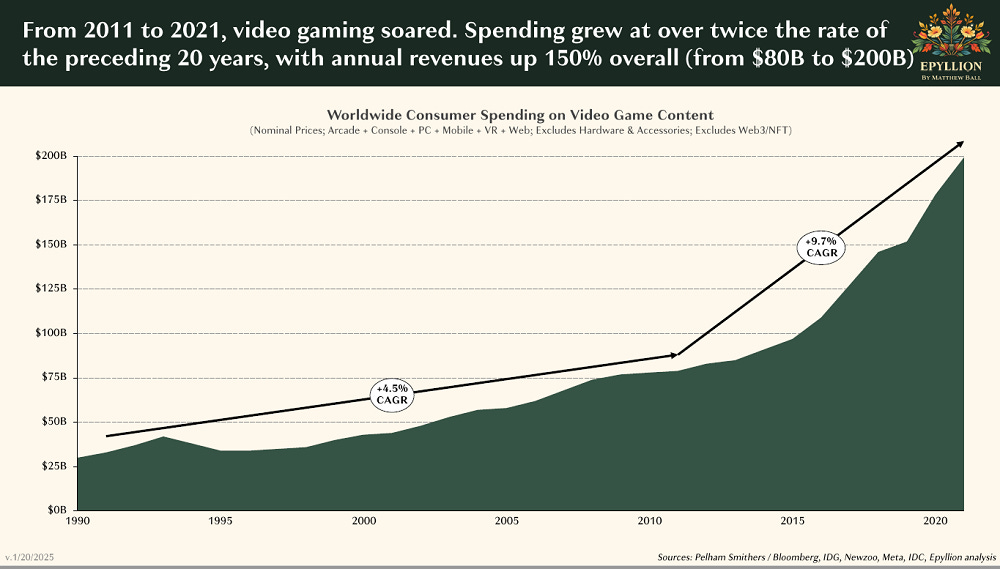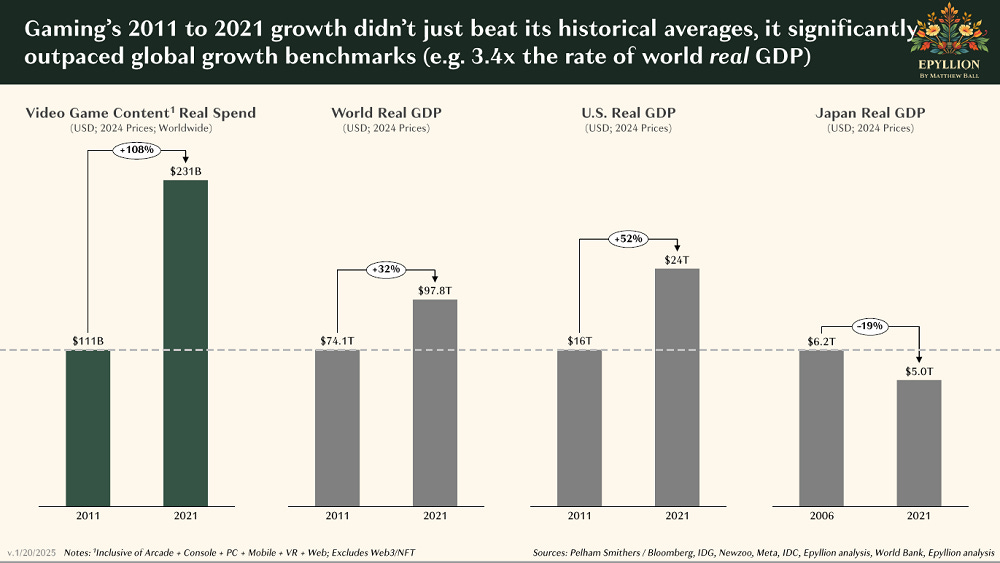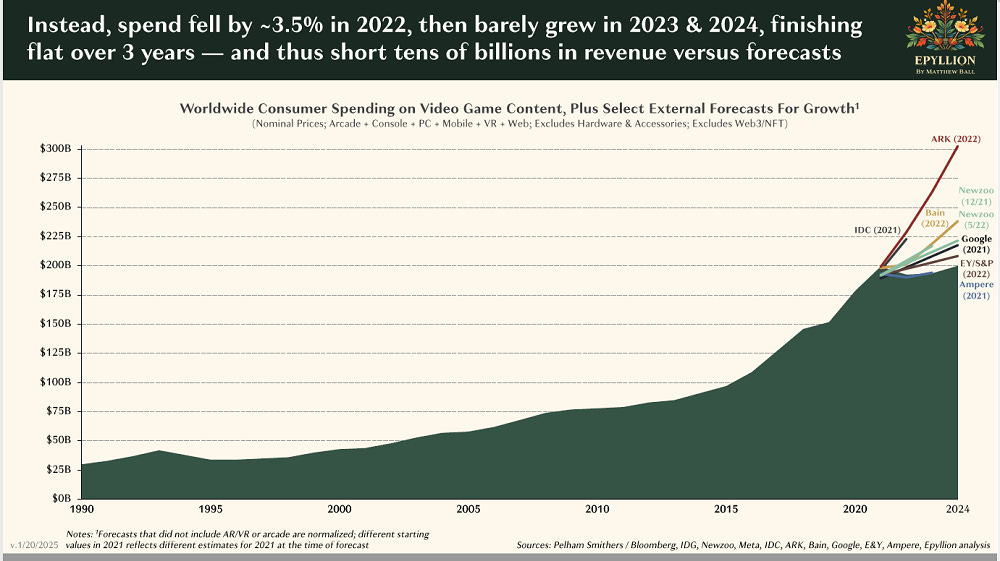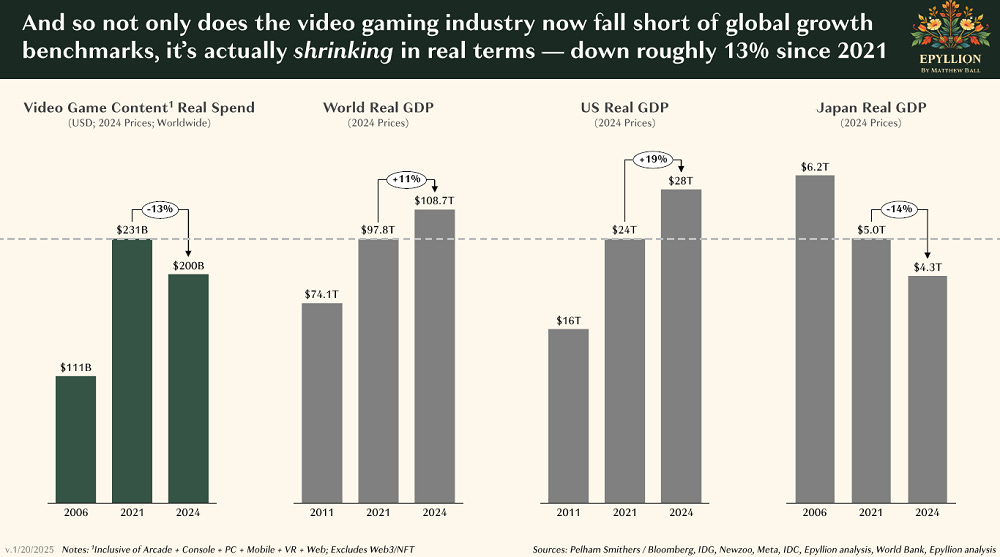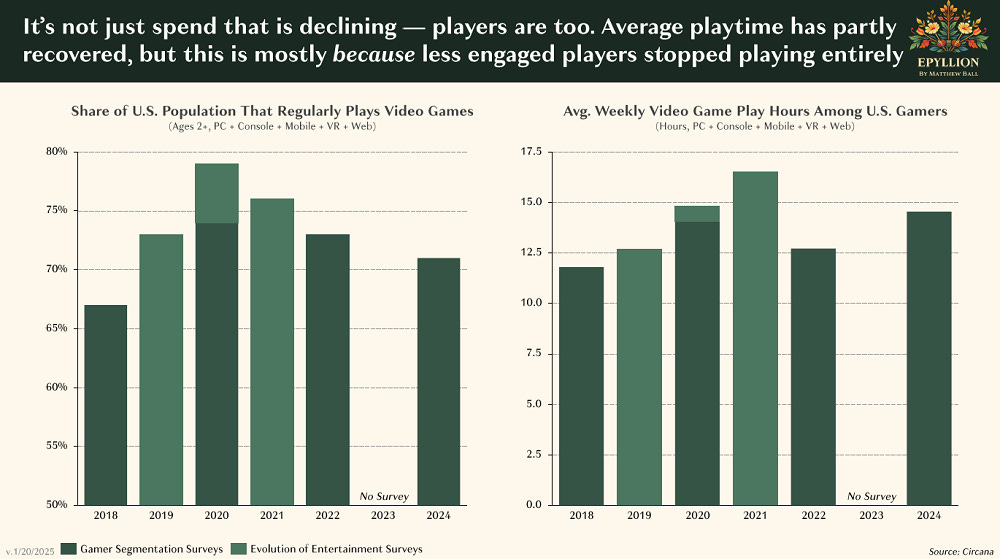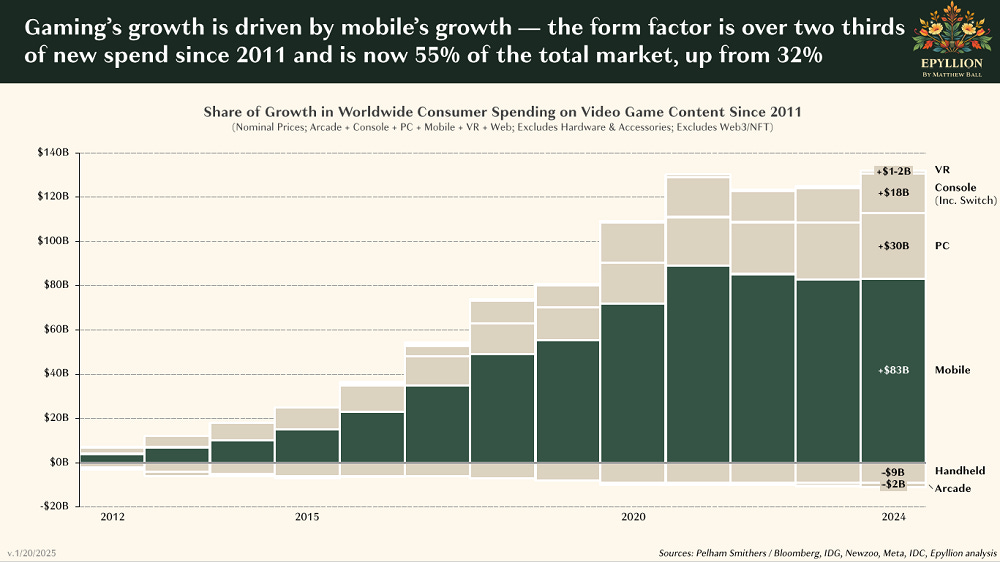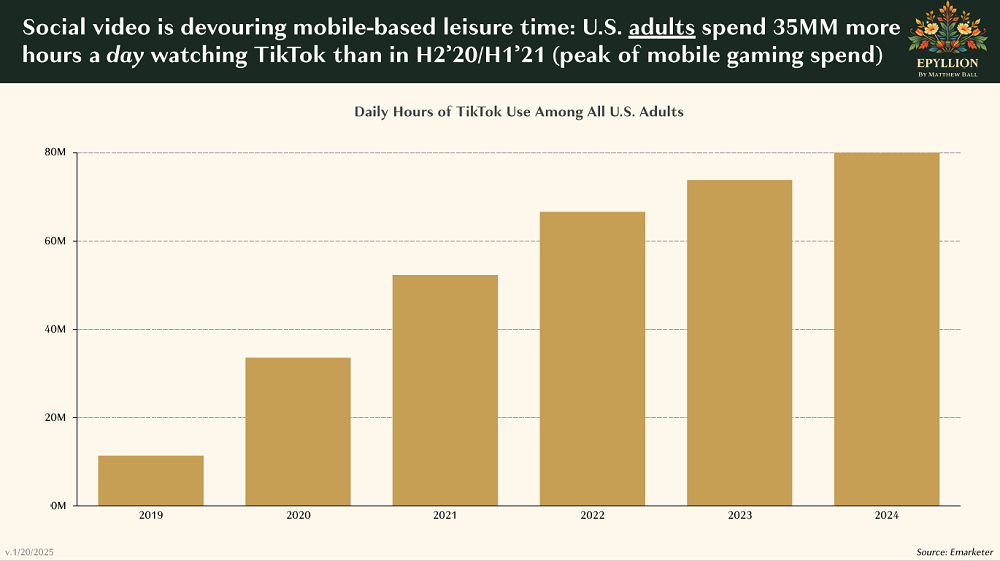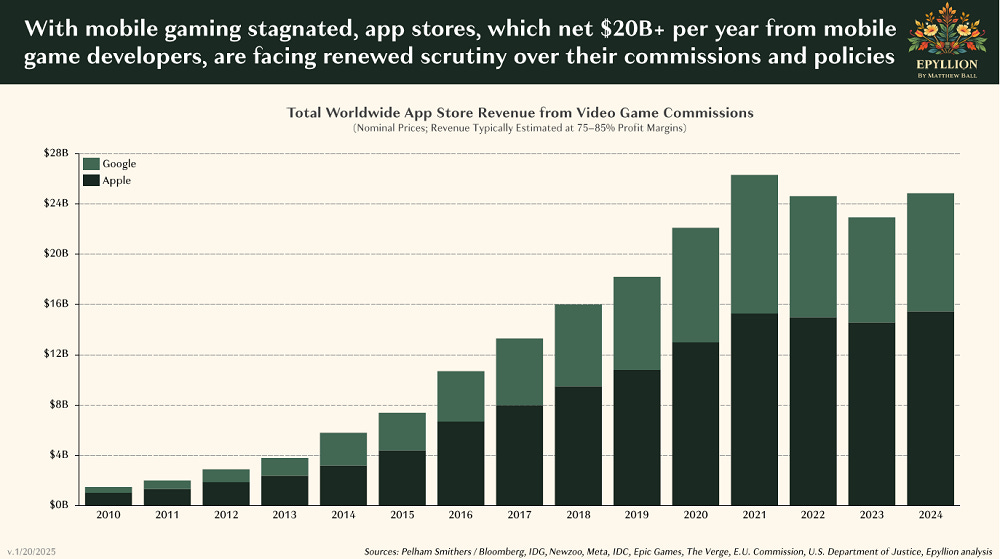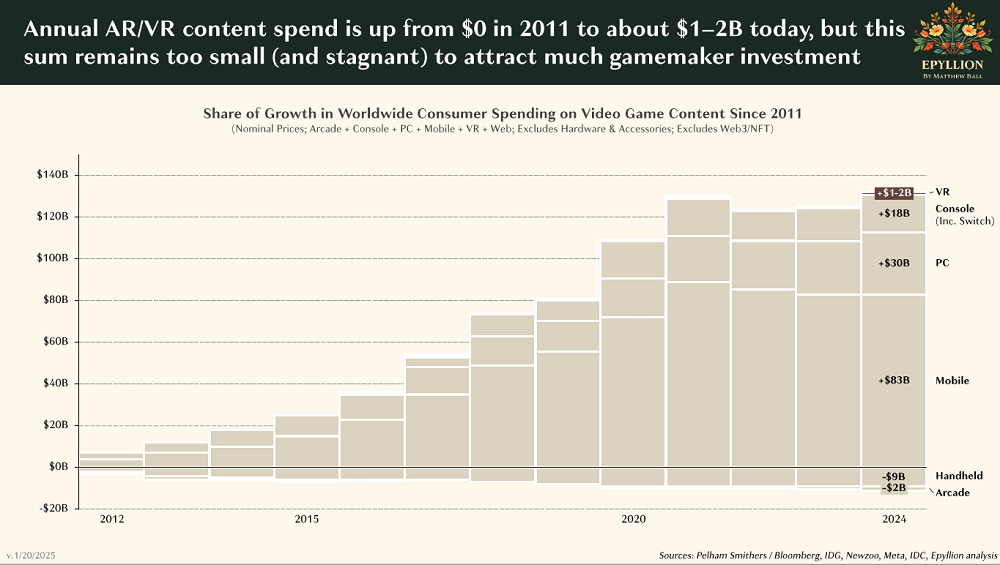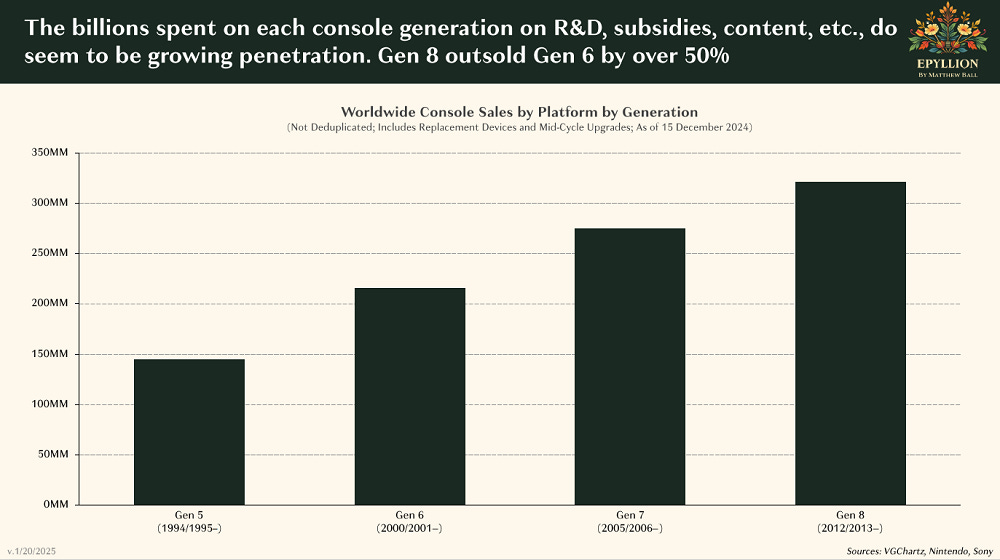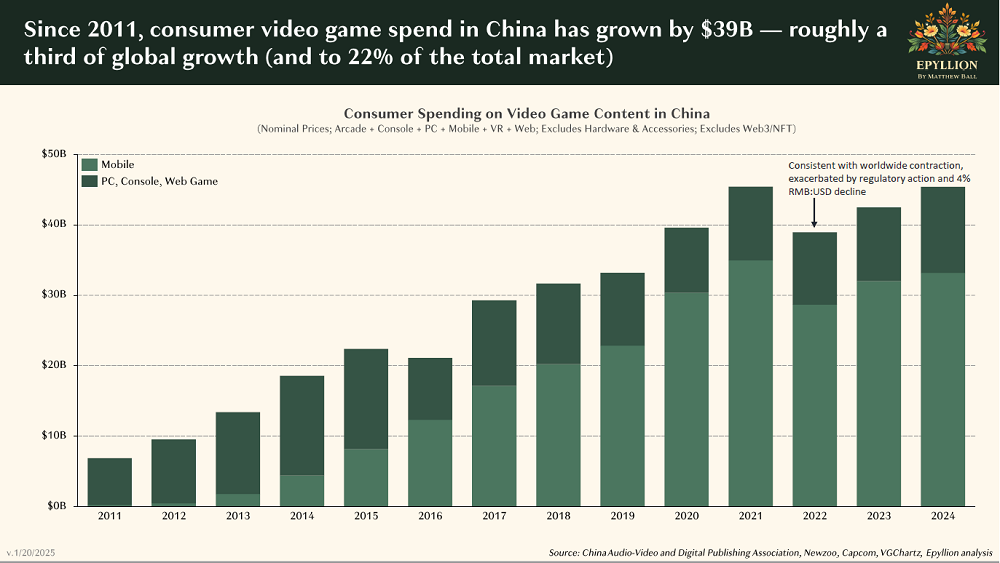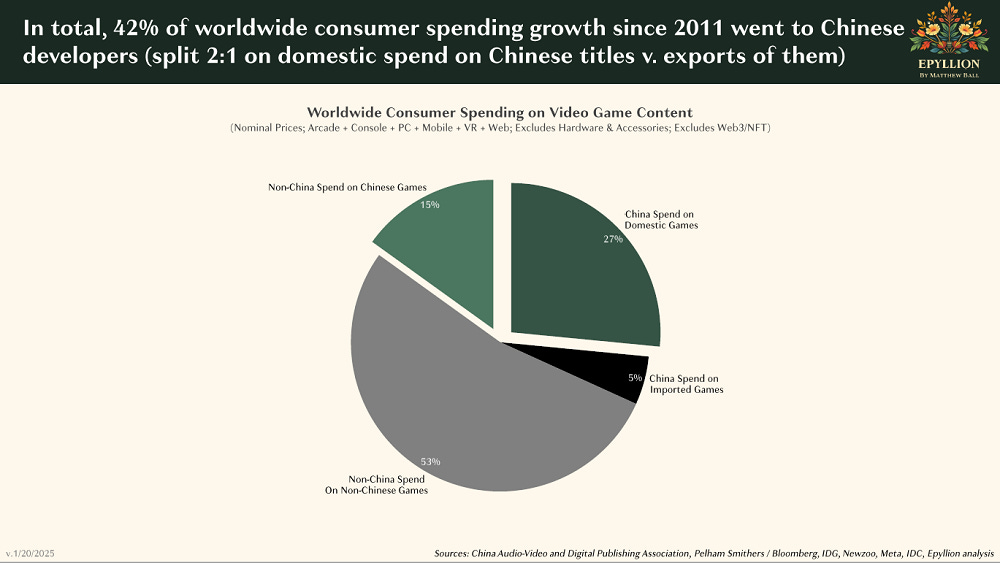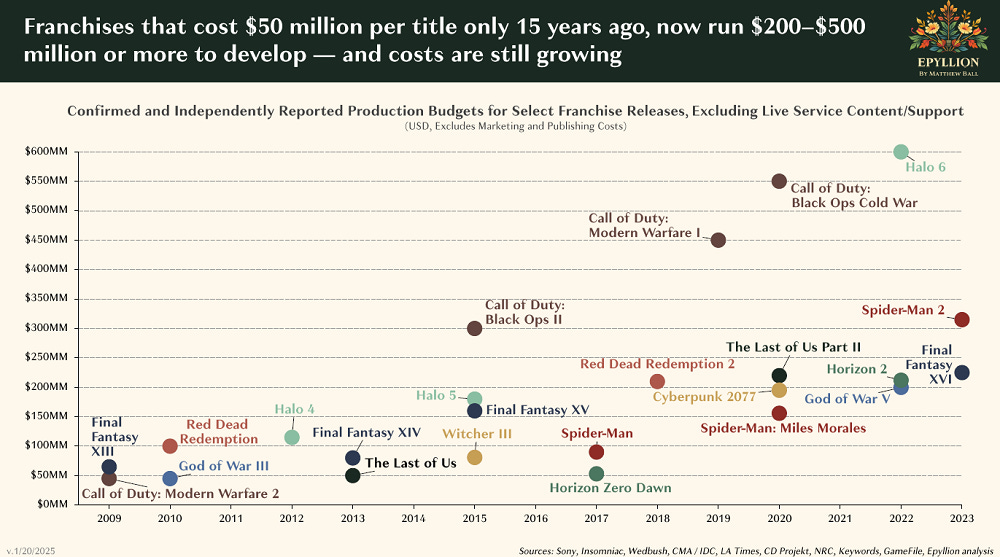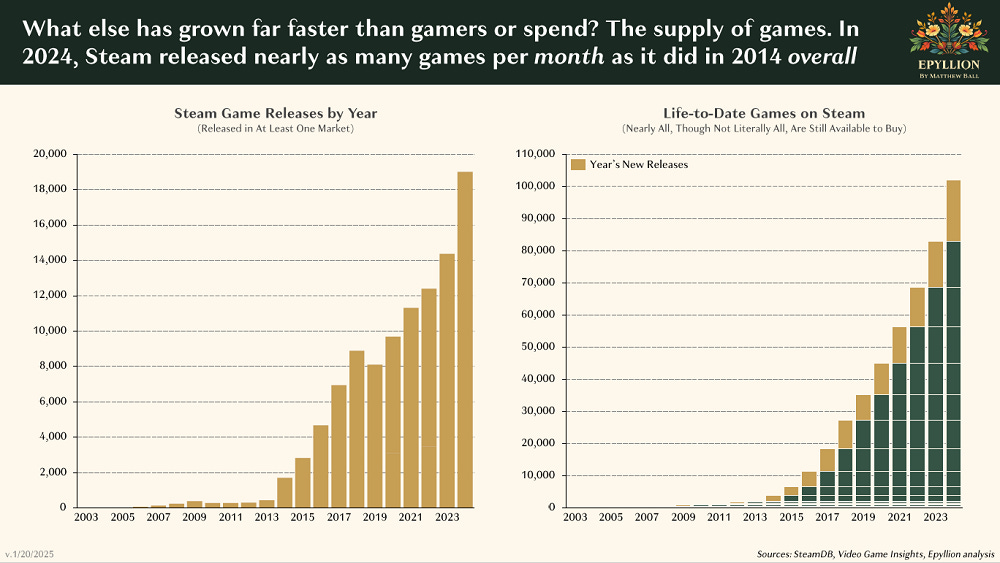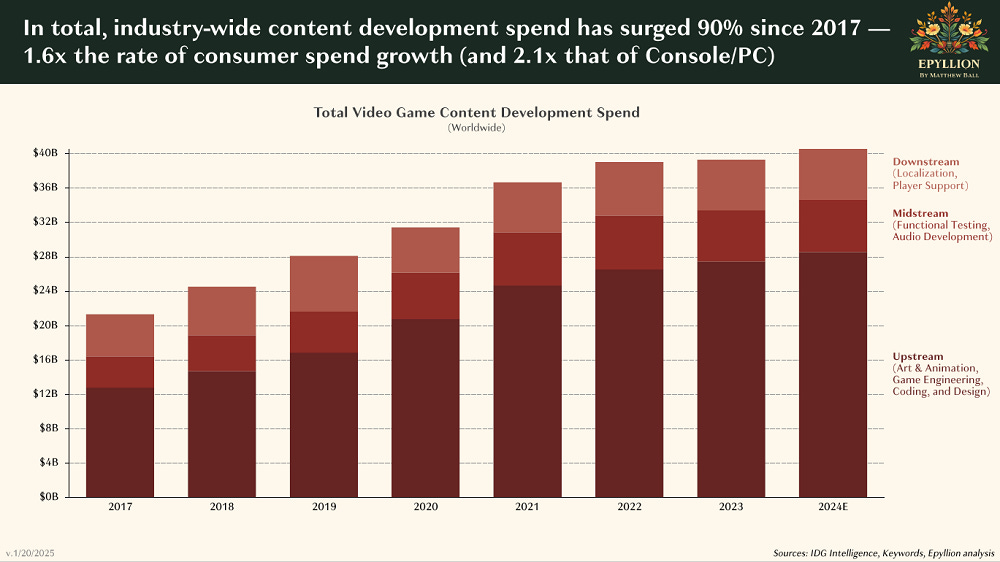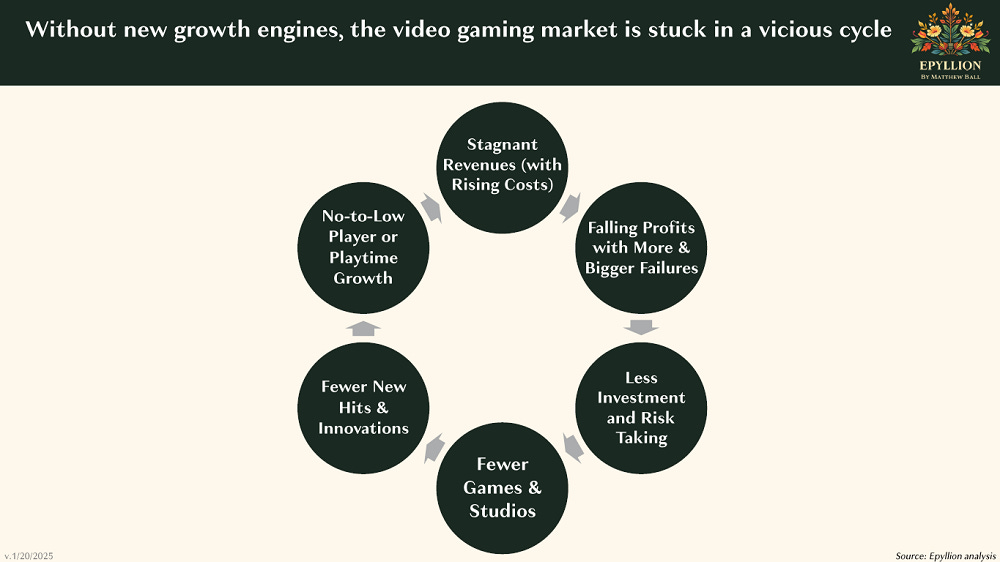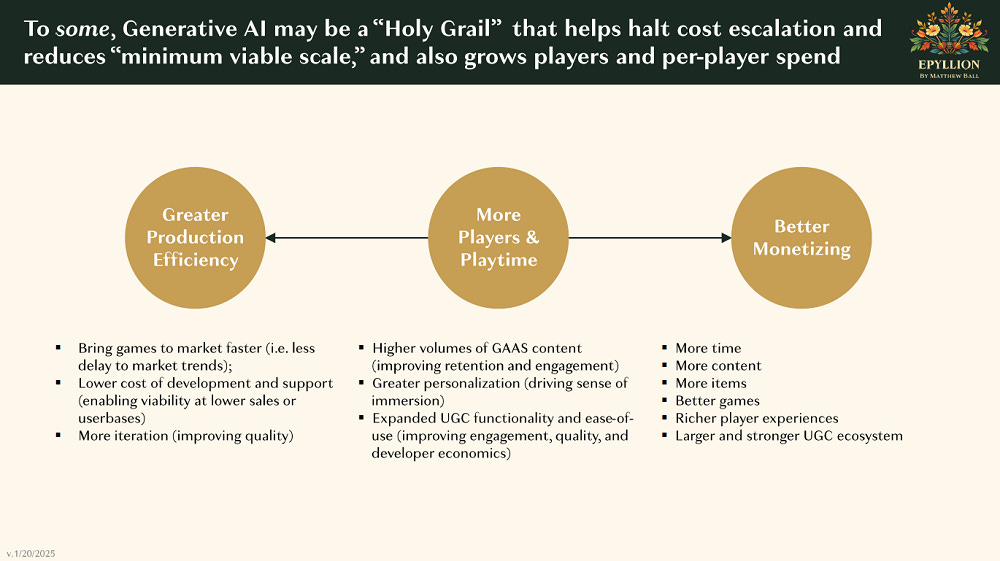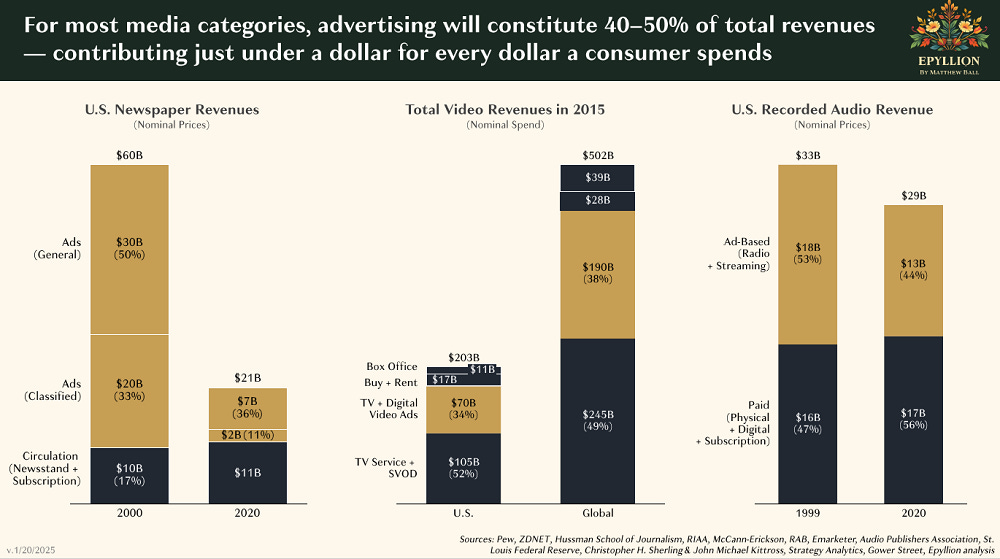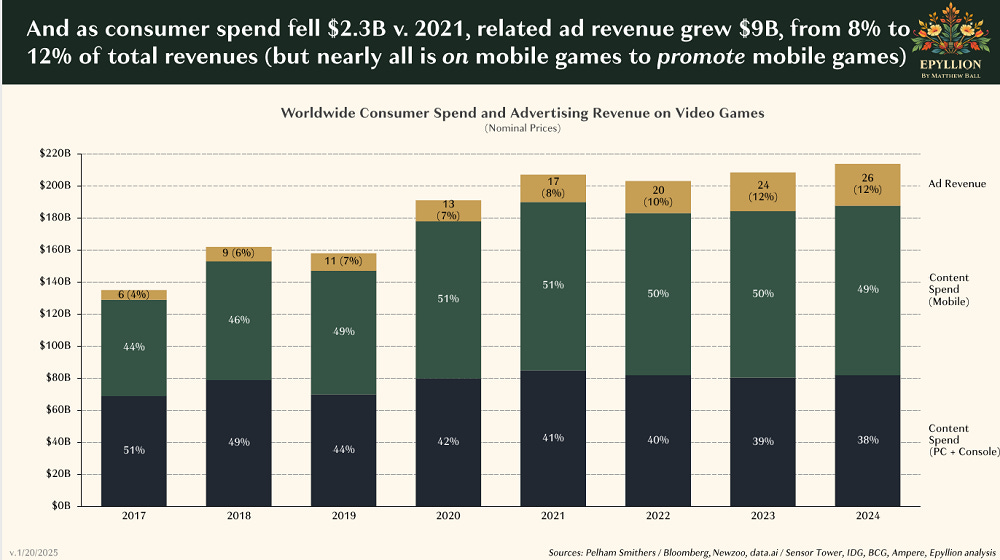Notes on "The State of Video Gaming in 2025"
My notes on the 223 pages' industry analysis by Matthew Ball, CEO of Epyllion. At the end of the post, you can download the full industry analysis.
Industry Growth and Decline
From 2011 to 2021, the video gaming industry experienced significant growth, with spending increasing by 150%, from $80 billion to $200 billion. This growth outpaced the rate of world real GDP, emphasizing the industry's robust expansion during this period.
However, post-2021, the industry faced a downturn, with spending decreasing by about 3.5% in 2022 and showing minimal growth in 2023 and 2024. The expected acceleration in growth did not materialize, and the industry’s revenue fell tens of billions short of forecasts.
Market Challenges
Several factors contributed to the industry’s stall, including the end of console and GPU shortages and a strong content release slate that did not translate into expected financial success.
The video gaming market also experienced a contraction in player engagement and spend, indicating that previously reliable growth engines (like mobile gaming and live services) were becoming less effective.
Venture capital (VC) funding for gaming content saw a dramatic reduction, decreasing by 77% from late 2021 to early 2022, reverting to levels last seen in 2018-2019.
Technological and Competitive Landscape
Mobile gaming, which had been a significant growth driver, faced challenges from new privacy regulations (like IDFA changes) and intense competition from social video platforms such as TikTok, which absorbed a significant portion of potential mobile gaming time.
Established franchises and platforms struggled to maintain their market position against new entrants and technological shifts. For example, the emergence of AR/VR technology did not significantly impact the gaming market due to high costs and limited consumer interest.
Economic Factors
The industry’s economic environment has been affected by rising development costs, higher consumer expectations, and the saturation of certain game genres and markets.
Notably, China’s gaming market has grown substantially, becoming a major player both as a consumer and producer of video games, which has shifted global market dynamics.
Future Outlook
Looking forward, the analysis suggests that without the introduction of new growth engines or significant changes in market strategies, the video gaming industry might continue to face challenges in achieving previous growth rates.
Potential areas for future growth include further integration of user-generated content, enhanced social gaming experiences, and possibly the leveraging of new technologies like cloud gaming and AI to create novel gaming experiences.
And more
The analysis also talks about Roblox, Nintendo Switch, Call of Duty, GTA, and many more videogames and platforms like Steam.


